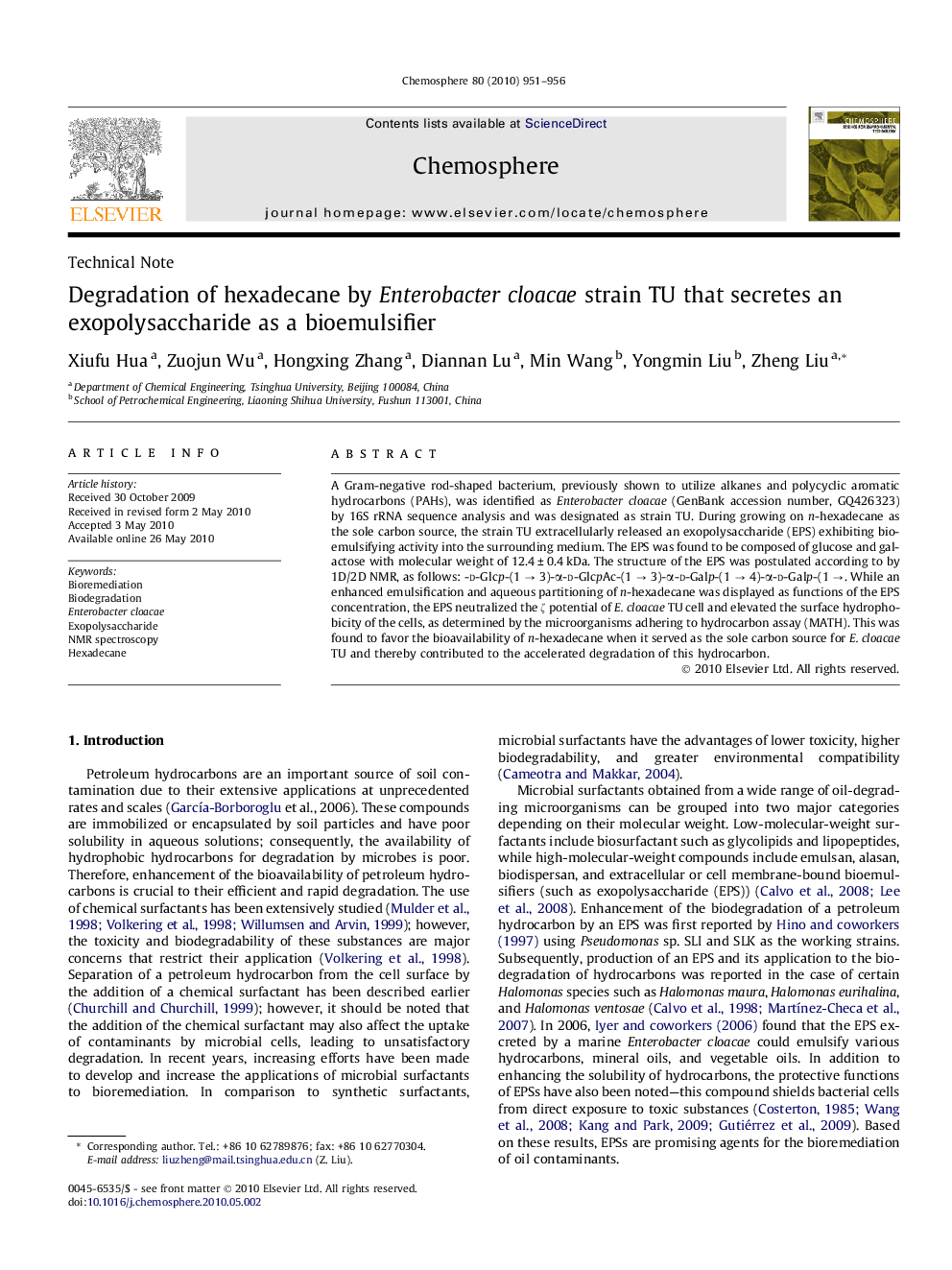| Article ID | Journal | Published Year | Pages | File Type |
|---|---|---|---|---|
| 4411574 | Chemosphere | 2010 | 6 Pages |
A Gram-negative rod-shaped bacterium, previously shown to utilize alkanes and polycyclic aromatic hydrocarbons (PAHs), was identified as Enterobacter cloacae (GenBank accession number, GQ426323) by 16S rRNA sequence analysis and was designated as strain TU. During growing on n-hexadecane as the sole carbon source, the strain TU extracellularly released an exopolysaccharide (EPS) exhibiting bioemulsifying activity into the surrounding medium. The EPS was found to be composed of glucose and galactose with molecular weight of 12.4 ± 0.4 kDa. The structure of the EPS was postulated according to by 1D/2D NMR, as follows: -d-Glcp-(1 → 3)-α-d-GlcpAc-(1 → 3)-α-d-Galp-(1 → 4)-α-d-Galp-(1 →. While an enhanced emulsification and aqueous partitioning of n-hexadecane was displayed as functions of the EPS concentration, the EPS neutralized the ζ potential of E. cloacae TU cell and elevated the surface hydrophobicity of the cells, as determined by the microorganisms adhering to hydrocarbon assay (MATH). This was found to favor the bioavailability of n-hexadecane when it served as the sole carbon source for E. cloacae TU and thereby contributed to the accelerated degradation of this hydrocarbon.
